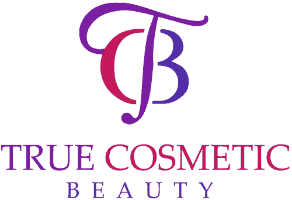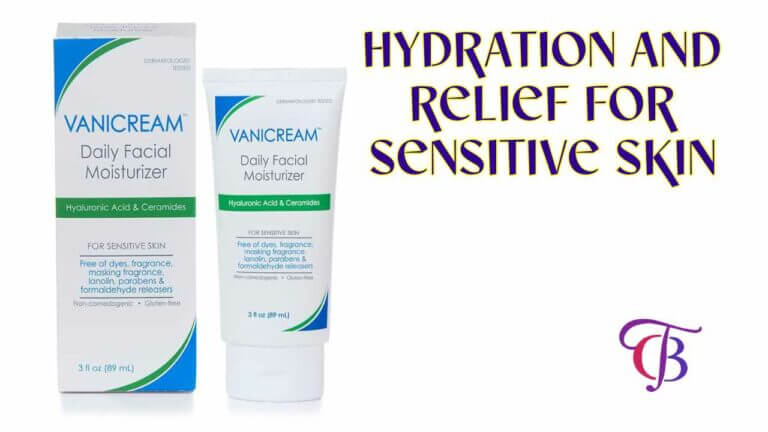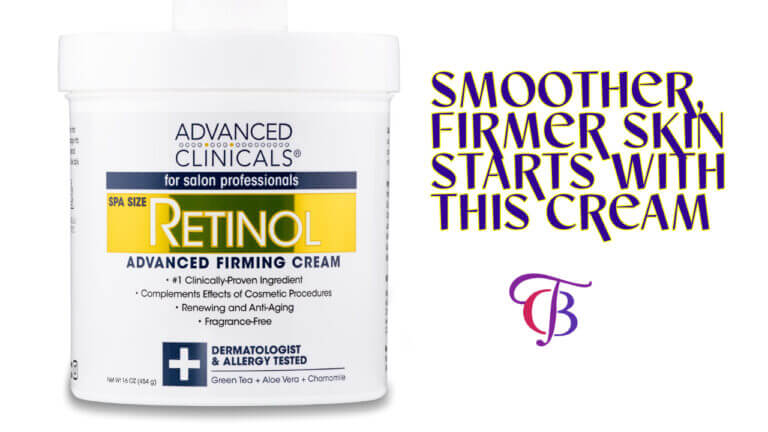Ultimate Guide to Skin Moisturizers – Types, Benefits, and Application
Indubitably, the quest for the perfect skincare routine is essential in achieving a healthy and radiant complexion. When it comes to maintaining hydrated and nourished skin, moisturizers play a vital role in providing the necessary hydration and protection against environmental factors. In this ultimate guide, you will learn about the different types of moisturizers available, the benefits they offer, and the proper application techniques to help you achieve your skincare goals.
As you navigate through the world of skin moisturizers, it is important to understand that there are various types to choose from, each catering to different skin needs. From lightweight lotions to rich creams and oils, it’s crucial to select a moisturizer that best suits your specific skin type and concerns. Additionally, knowing the benefits of using a moisturizer, such as hydration, anti-aging effects, and skin protection</i, can help you make an informed decision when incorporating this essential step into your skincare routine. Lastly, understanding the proper application techniques, including when to apply moisturizer and how much to use, can maximize the effectiveness of this skincare staple.
Key Takeaways:
- Moisturizers are essential for all skin types: Regardless of your skin type, whether it’s oily, dry, or combination, using a moisturizer is crucial for maintaining skin hydration and health.
- Understand the different types of moisturizers: From lotions and creams to ointments and serums, each type of moisturizer offers unique benefits and is suitable for specific skin concerns.
- Benefits of using moisturizers: Besides keeping the skin hydrated, moisturizers also help in reducing signs of aging, protecting the skin from environmental damage, and improving skin texture and tone.
- Application tips for effective moisturizing: Applying moisturizer on damp skin, using upward motions, and being consistent with your moisturizing routine can enhance the efficacy of the product.
- Choose the right moisturizer for your skin: It’s important to consider your skin’s specific needs, such as acne-prone, sensitive, or aging skin, and choose a moisturizer with ingredients tailored to address those concerns.
Understanding Skin Types Any effective skincare routine starts with understanding your skin type. Different skin types have different moisturization needs, and using the right moisturizer for your skin type can make a significant difference in the health and appearance of your skin. Knowing your skin type will help you choose the right moisturizer and maintain a proper skincare routine for optimal results. | Skin Type | Characteristics | |——————–|——————————————————-| | Dry Skin | Tight, rough, flaky, dull, prone to fine lines | | Oily Skin | Greasy, shiny, prone to acne and blemishes | | Combination Skin | Oily in the T-zone (forehead, nose, chin) and normal/dry on cheeks | | Sensitive Skin | Easily irritated, prone to redness and allergic reactions | | Mature Skin | Fine lines, wrinkles, sagging, and age spots | Dry Skin and Moisturization Needs
Dry Skin and Moisturization Needs
If you have dry skin, it means your skin lacks natural oils, making it prone to flakiness, irritation, and roughness. Proper moisturization is crucial to keep your skin hydrated, smooth, and plump. Look for moisturizers that contain hyaluronic acid, glycerin, and ceramides, as they help to lock in moisture and improve your skin’s barrier function. Oily Skin and Moisturization Needs
Oily Skin and Moisturization Needs
Contrary to popular belief, oily skin also needs moisturization. If you have oily skin, it means your skin produces excess sebum, leading to a greasy and shiny appearance. Opt for oil-free and non-comedogenicmoisturizers that won’t clog your pores. Look for ingredients like hyaluronic acid and dimethicone to keep your skin hydrated without adding extra oil. Combination Skin and Moisturization Needs
Combination Skin and Moisturization Needs
Having combination skin means that different areas of your face have different moisturization needs. Focus on lightweight, non-greasy moisturizers that can hydrate dry areas without making oily areas more greasy. Look for products that contain hyaluronic acid and salicylic acid to balance hydration and manage excess oil production. Sensitive Skin and Moisturization Needs
Sensitive Skin and Moisturization Needs
If you have sensitive skin, it’s essential to use moisturizers that are gentle and free of fragrances and allergens. Look for moisturizers with soothing ingredients like aloe vera, calendula, and colloidal oatmeal to calm and hydrate your skin without causing irritation or redness. Mature Skin and Moisturization Needs
Mature Skin and Moisturization Needs
As you age, your skin loses moisture and elasticity, leading to the formation of wrinkles and fine lines. To address the moisturization needs of mature skin, look for anti-agingmoisturizers that contain retinol, peptides, and antioxidants to hydrate, repair, and protect your skin. Additionally, choose moisturizers with a rich texture to provide the necessary nourishment for mature skin.
Different Types of Skin Moisturizers
Despite the wide variety of skin moisturizers available, they can generally be categorized into several types, each with its own unique benefits and applications. Recognizing the differences between them can help you select the best moisturizer for your specific skin needs.
| Type | Description |
| Creams | Thick, hydrating formulas that provide long-lasting moisture |
| Lotions | Lightweight, fast-absorbing moisturizers suitable for daily use |
| Ointments | Heavy, occlusive products that lock in moisture and protect the skin barrier |
| Serums | Concentrated, lightweight formulas designed to target specific skin concerns |
| Gels | Water-based moisturizers that provide a cooling, refreshing sensation |
Creams
Creams are a popular choice for those with normal to dry skin. They are thicker and more hydrating than lotions, making them ideal for replenishing moisture and preventing water loss from the skin. Creams are often used during the colder months when the skin needs extra protection against dryness.
Lotions
Lotions are lightweight, easily spreadable moisturizers that are suitable for daily use. They are designed to provide quick hydration without leaving a greasy residue, making them perfect for individuals with oily or combination skin. Lotions are also a great option for warm, humid climates where heavier moisturizers may feel too suffocating on the skin.
Ointments
Ointments are thick, heavy moisturizers that form a protective barrier over the skin. They are highly effective at sealing in moisture and preventing trans-epidermal water loss, making them particularly beneficial for those with eczema, psoriasis, or extremely dry, cracked skin. However, ointments can feel greasy and may not be suitable for all skin types.
Insights into Skin Moisturizers Ingredients
Lastly, let’s delve into the different ingredients that make up skin moisturizers. The vast array of ingredients in moisturizers can be overwhelming, but understanding the benefits and potential drawbacks of each can help you make informed choices for your skincare routine.
Natural Ingredients in Moisturizers
Natural ingredients are derived from plants, fruits, and other natural sources, and are often sought after for their gentle, nourishing properties. Common natural ingredients found in moisturizers include aloe vera, coconut oil, shea butter, and essential oils. These ingredients are known for their hydrating, anti-inflammatory, and antioxidant properties, making them ideal for soothing and nourishing the skin.
Synthetic Ingredients in Moisturizers
Synthetic ingredients, on the other hand, are often created in a laboratory and can include ingredients such as parabens, sulfates, and synthetic fragrances. While these ingredients may provide certain benefits, they can also be harsh on the skin and may cause irritation or sensitivity in some individuals. It’s important to be mindful of synthetic ingredients and their potential effects on your skin.
Pros and Cons of Various Ingredients
When it comes to choosing a moisturizer, understanding the pros and cons of various ingredients can help you make an informed decision. Below is a breakdown of some common ingredients found in moisturizers, along with their potential benefits and drawbacks:
| Ingredient | Pros and Cons |
|---|---|
| Aloe Vera | Pros: Soothes and hydrates the skin Cons: May cause allergic reactions in some individuals |
| Coconut Oil | Pros: Hydrating and anti-inflammatory Cons: Can clog pores for some skin types |
| Parabens | Pros: Extend shelf life of products Cons: Potential hormone-disrupting effects |
| Essential Oils | Pros: Natural fragrance and potential therapeutic benefits Cons: Some essential oils may cause skin irritation |
| Sulfates | Pros: Effective cleansing agent Cons: Can strip natural oils and cause dryness |
It’s important to be mindful of the ingredients in the moisturizer you choose, as they can have a significant impact on your skin’s health. Consider your skin type, preferences, and any sensitivities you may have when selecting a moisturizer with the right ingredients for you.
Factors to Consider When Choosing a Moisturizer
Your skin is unique, and choosing the right moisturizer can depend on several factors. Consider these key elements when selecting the perfect moisturizer for your skin:
Seasonal Factors
When it comes to choosing a moisturizer, the changing seasons can have a significant impact on your skin’s needs. Dry, cold weather can leave your skin parched and in need of extra hydration, while warm, humid conditions may require a lighter, oil-free moisturizer to prevent clogged pores. Consider the seasonal changes and adjust your moisturizer accordingly.
- Dry, cold weather may require a rich, emollient moisturizer to combat dryness and flakiness.
- Warm, humid conditions may call for a lighter, non-comedogenic moisturizer to prevent excess oil production.
Perceiving how your skin reacts to different seasons can help you choose the right moisturizer for your skin’s changing needs.
Age Factors
As you age, your skin undergoes a natural process of aging, which may lead to changes in its texture, elasticity, and moisture levels. Younger skin may benefit from a lighter moisturizer with added hydration, while mature skin may require a more intensive, anti-aging moisturizer to address fine lines and wrinkles.
- Younger skin may need a lightweight, non-greasy moisturizer to maintain hydration without clogging pores.
- Mature skin might benefit from a rich, cream-based moisturizer containing anti-aging ingredients like retinol or hyaluronic acid.
Assume that your age could impact the type of moisturizer that will best suit your skin’s changing needs.
Lifestyle Factors
Your daily activities and lifestyle can also influence your moisturizer choice. If you are frequently exposed to sunlight or environmental pollutants, you may require a moisturizer with added SPF or antioxidant protection. Additionally, if you engage in athletic activities or sweat often, a water-resistant moisturizer may be beneficial in maintaining hydration.
- After participating in outdoor activities, it’s important to use a moisturizer with SPF to protect your skin from harmful UV rays.
- If you’re frequently exposed to pollutants, consider a moisturizer with added antioxidants to combat free radical damage.
After evaluating your lifestyle, select a moisturizer that provides the necessary protection and hydration for your skin.
Budget Factors
When choosing a moisturizer, your budget is an important consideration. There are luxury moisturizer options packed with high-end ingredients, as well as drugstore options that offer quality at a more affordable price. Consider your budget constraints and look for moisturizers that provide the desired benefits within your price range.
- Assume that you don’t have to break the bank to find an effective moisturizer—there are plenty of affordable options available.
- If you have the means, investing in a luxury moisturizer might provide additional benefits and a touch of indulgence.
Consider your budget and explore moisturizer options that align with your financial parameters.
Step-by-Step Guide to Applying Skin Moisturizers
However, applying skin moisturizer is not as simple as slathering it on your face. There is a specific method to ensure that you get the most out of your product. Below, find a detailed guide on how to properly apply your moisturizer:
| Step | Description |
| 1 | Start with a clean face to ensure that the moisturizer is able to penetrate your skin properly. Use a gentle cleanser to remove any dirt or excess oil. |
| 2 | Take a small amount of moisturizer on your fingertips and apply it to your face using gentle, upward strokes. Make sure to cover all areas of your face, including the neck. |
| 3 | Allow the moisturizer to fully absorb into your skin before applying any makeup or sunscreen. |
Steps for Morning Moisturization
When moisturizing in the morning, it’s important to use a product with SPF to protect your skin from harmful UV rays. After cleansing your face, apply a pea-sized amount of your moisturizer, focusing on gently massaging it into your skin. Give it a few minutes to absorb before applying your makeup.
Steps for Evening Moisturization
In the evening, you can opt for a heavier, more hydrating moisturizer. After cleansing your face, apply a generous amount of moisturizer to your skin and let it work its magic while you sleep. This will help replenish moisture lost during the day and keep your skin hydrated.
Special Tips for Effective Moisturization
When moisturizing, it’s important to remember that less is more. Use a pea-sized amount of product for your face and neck, as using too much can clog your pores and lead to breakouts. Additionally, always use upward, gentle strokes to apply your moisturizer to prevent dragging the skin downward and causing wrinkles. Assume that your skin is unique and may require specific ingredients, so always look for moisturizers tailored to your skin type, whether it’s dry, oily, or combination.
- Use a moisturizer with SPF for daytime protection.
- Avoid using too much product to prevent clogged pores.
- Consider using a separate eye cream for the delicate skin around your eyes.
- Always apply your moisturizer in upward, gentle strokes to promote healthy skin.
Pros and Cons of Different Types of Moisturizers
After understanding the different types of moisturizers available on the market, it’s important to assess the pros and cons of each to make an informed decision about which one is right for you. Below, we break down the benefits and potential drawbacks of each type into a comprehensive table.
| Type | Pros and Cons |
| Emollients | Effective for dry skin, create a protective barrier, may feel greasy |
| Humectants | Attract moisture to the skin, may cause irritation in some individuals |
| Occlusives | Seal in moisture, can clog pores for some individuals |
| Antioxidants | Combat free radicals, may be less effective at hydrating the skin |
| Prescription moisturizers | Target specific skin concerns, may have potential side effects |
Assessing the Benefits of Each Type
When considering the benefits of each type of moisturizer, you’ll want to assess how it aligns with your specific skin concerns. Emollients, for example, are highly effective for those with dry skin, as they create a protective barrier to prevent water loss. On the other hand, humectants attract moisture to the skin, which can be beneficial, but may cause irritation for some individuals. Understanding these advantages will help you make an informed decision about which type is best for your skin.
Identifying Potential Drawbacks
While each type of moisturizer offers unique benefits, it’s important to also consider potential drawbacks. For example, occlusives may effectively seal in moisture, but for some individuals, they can also clog pores and lead to breakouts. Additionally, prescription moisturizers may target specific skin concerns, but they can also come with potential side effects that you should be aware of. It’s important to carefully weigh the pros and cons of each type to find the best fit for your skin’s needs.
Conclusion
Taking this into account, it is crucial to understand the different types of skin moisturizers and their benefits in order to choose the right one for your skin type. Whether you have dry, oily, or combination skin, selecting the appropriate moisturizer can help maintain and improve the health and appearance of your skin. By incorporating a moisturizer into your daily skincare routine, you can keep your skin hydrated, prevent the signs of aging, and protect it from environmental factors.
Remember to apply your moisturizer properly by using the correct amount and gently massaging it into your skin. Patience is key when it comes to seeing results, as it may take some time before you notice any significant improvements in your skin. In conclusion, understanding the types and benefits of skin moisturizers, as well as how to properly apply them, is essential for maintaining healthy and radiant skin.
Ultimate Guide to Skin Moisturizers – Types, Benefits, and Application
Q: What are the different types of skin moisturizers?
A: There are various types of skin moisturizers, including creams, lotions, ointments, and serums. Each type has unique properties and is formulated for different skin types and concerns.
Q: What are the benefits of using a skin moisturizer?
A: Using a skin moisturizer helps to hydrate and nourish the skin, improve its texture and elasticity, and protect it from environmental damage. Moisturizers also help to prevent dryness, flakiness, and premature aging of the skin.
Q: How often should I apply a skin moisturizer?
A: It is recommended to apply a skin moisturizer at least twice a day – in the morning and evening. However, the frequency of application may vary based on your skin type, the climate, and your specific skincare needs.
Q: Can I use the same moisturizer for my face and body?
A: While some moisturizers are formulated for both the face and body, it is generally advisable to use a separate moisturizer for the face and body. Facial skin is more delicate and may have different needs compared to the skin on the rest of the body.
Q: How do I choose the right moisturizer for my skin type?
A: It is important to consider your skin type (dry, oily, combination, sensitive), any specific skin concerns you may have (acne, aging, sensitivity), and the climate in which you live. Look for moisturizers labeled for your specific skin type or concerns and consider consulting with a dermatologist for personalized recommendations.
Q: Can moisturizers clog pores and cause acne?
A: Some moisturizers, particularly those that are heavy or contain comedogenic (pore-clogging) ingredients, can potentially contribute to acne. Look for non-comedogenic formulas labeled as “oil-free” or “non-greasy” if you are prone to breakouts.
Q: Is it necessary to apply moisturizer even if I have oily skin?
A: Yes, even if you have oily skin, it is important to use a moisturizer. Skipping moisturizer can actually exacerbate oiliness by causing the skin to overcompensate for the lack of moisture, leading to increased oil production. Opt for lightweight, oil-free moisturizers suited for oily skin.




